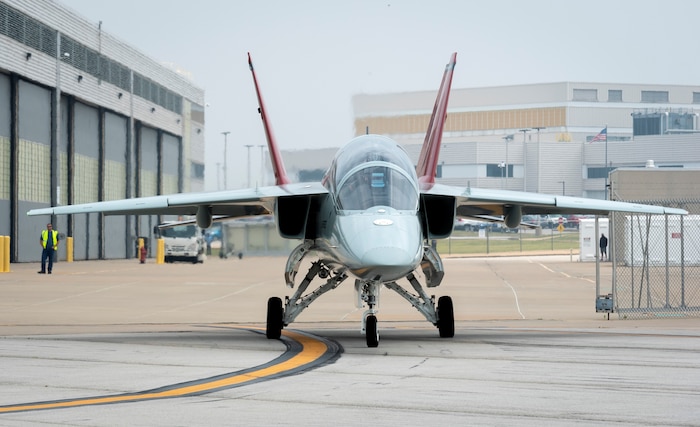The Air Force accepted the first of five T-7A Red Hawk aircraft from the Boeing Co. Sept. 14.
The five Engineering, Manufacturing and Development aircraft will quickly begin testing and join the two contractor-owned production representative jets that have completed over 500 flights testing performance and flying qualities. Additionally, Test Readiness Review and flight test planning have been completed.
Following acceptance, EMD flight testing is planned to start at the end of summer 2023 - first in St. Louis then at Edwards Air Force Base, California.
"I continue to be amazed by this team," said Col. Kirt Cassell, Air Force Life Cycle Management Center's T-7 program manager. "There has been a lot of effort over the last couple months to get through first flight and now aircraft acceptance. We are excited to get these EMD aircraft into flight test."
"The Red Hawk Integrated Test Team is ready and looking forward to begin EMD Test and Evaluation," added Dr. Troy C. Hoeger, AFLCMC's T-7A chief developmental tester.
The T-7A program contract was awarded in September 2018 to Boeing Defense, Space and Security and programmed to deliver an integrated system of 351 aircraft, 46 Ground Based Training Systems and associated support equipment.
The T-7A is a new advanced training system that is being developed to replace the aging T-38 Talon. The Red Hawk leverages a glass cockpit, stadium seating and embedded training to meet U.S. Air Force needs to train the next generation of fighter and bomber pilots.
The aircraft, combined with advanced ground-based simulators, will be a giant leap in pilot training as the Air Force strives to maintain its tactical advantage over evolving threats.







